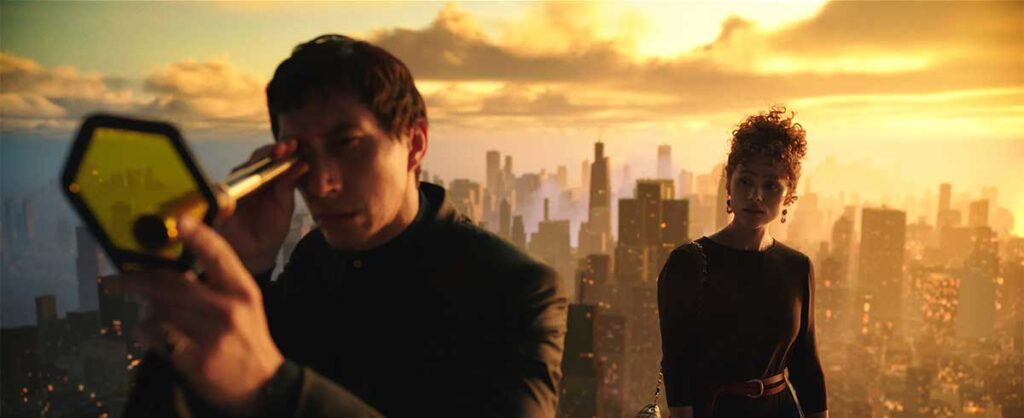As I write this review, surely there are other film critics out there–you know the type, the ones who think a little too hard about films and find magic where others don’t–who are actively psychoanalyzing Francis Ford Coppola’s expensive passion project Megalopolis, examining its deep themes, contrarian style, and unconventional storytelling.
I am not one of those critics, so let me just say this: before my screening of Megalopolis began, there was a 30-minute panel with Mr. Coppola and, for some reason, Robert De Niro and Spike Lee, neither of whom have anything to do with this movie as far as I am aware (De Niro looked particularly confused as to why he was there). It was a messy, unstructured, and largely uninformative discussion… and as it turns out, that was the highlight of the evening.
The ambitiously bad Megalopolis the movie is a strange, meandering clusterf*ck of a film, two hours and 18 minutes of quasi-experimental filmmaking that reaffirms my opinion that the revered Coppola is a couple of decades past his expiration date. In the opening panel, he explained how this movie was a discovery of his “own style” and that he could make what he wanted to make–I commend him for that, but that doesn’t mean we need to like the final product.
The movie boasts a semi-impressive cast, which includes Adam Driver acting like Adam Driver, Aubrey Plaza as a slutty, power-hungry trash reporter, Shia LaBeouf in what is easily his weirdest and most awkward roles, and Jon Voight looking very confused as to how he ended up in this movie. Nathalie Emmanual (“Game of Thrones”) also headlines the movie, and I mention her separately because she is the only actor in the movie who delivers a halfway decent performance (though I will admit that Plaza goes all out, for better or worse).
You can hardly blame the cast for being all over the place because the movie is all over the place. It’s a mess. I honestly was confused for half of it–confused at who the characters were, why they were doing the things they were doing, and how Francis Ford Coppola imagined this would all come together. There is a menagerie of odd subplots and character idiosyncrasies that could have been fascinating (or at least entertaining) had Coppola followed through on them, but he mostly lets them die on the vine.
For all its faults, there is a boldness to this production, a “I don’t give a flying f**k” mentality that can be commended. For as bad as Megalopolis is, nothing Coppola puts to screen is dull. There are entertaining bursts, funny moments (whether intentional or not), and delirious segments that have to be seen to be believed (that is not an endorsement).
The problem, of course, is that pieced together, Megalopolis is indeed dull. It’s a messy, subpar affair, with clunky visuals and odd acting and a subterfuge of themes and storylines that poop onto the screen without cohesive purpose.
There are critics who will say otherwise. Thee Wise Ones will declare Megalopolis brilliant, just not easily understood. They will revel in its weirdness and unconventionality. Some will even try to trick you by putting it in their “Best of Year” lists. But do not be fooled. Megalopolis is film dystopia.
Review by Erik Samdahl unless otherwise indicated.


